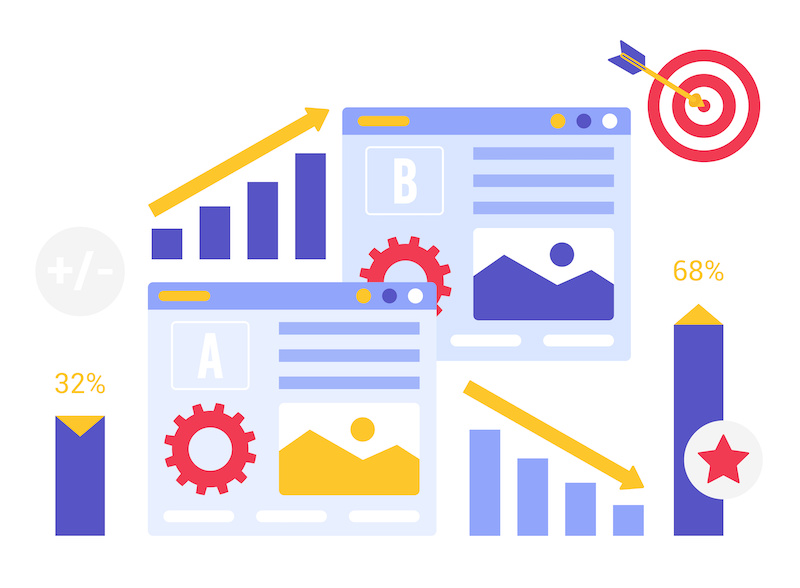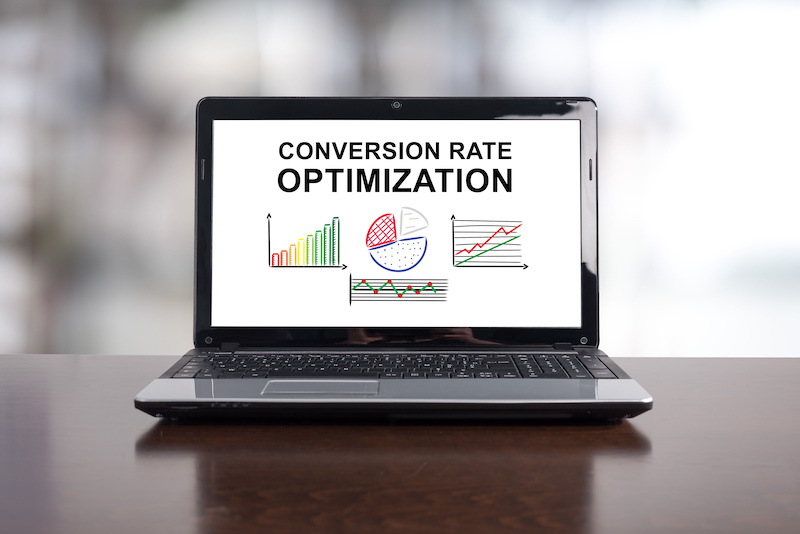Conversion rate optimization can be a daunting task, especially when it comes to taking your online business to the next level. It’s often the biggest hurdle that stands in the way of reaching your goals. If you’re unsure about how to approach conversion rate optimization, it can make it even more challenging to achieve success. But this process is what separates successful digital marketers from those who struggle.
Without effective optimization strategies, reaching new heights of success may remain out of reach. Attaining high conversion rates is no easy feat. Let me share an example: I recently spoke with an entrepreneur who encountered a setback while optimizing their website – instead of reducing bounce rates as intended, they actually increased! This experience has left them hesitant and concerned that they may never achieve their desired conversion goals.
I understand where they’re coming from!
Hopefully, this guide will help all those who are in the same boat…
Table of Contents:
- The Art of Conversion Rate Optimization (CRO)
- Identifying Your Goals for Conversion Rate Optimization
- Optimizing Landing Pages for Higher Conversion Rates
- Crafting Compelling Calls-to-Action
- Enhancing User Experiences for Higher Conversion Rates
- Testing & Analyzing Results for Conversion Rate Optimization
- The Art of Conversion Rate Optimization (CRO)
- FAQs in Relation to Conversion Rate Optimization
- Conclusion
The Art of Conversion Rate Optimization (CRO)
Let us begin by examining Conversion Rate Optimization.
The Importance of Conversion Rates
A good conversion rate indicates that more users are taking meaningful action on your site, directly contributing to achieving net revenue goals. It’s not just about generating random traffic; it’s about attracting qualified leads who are ready to convert into customers.
Achieving a strong ROI from your digital marketing initiatives is reliant on having high conversion rates, thus making CRO an essential part of any successful online strategy.
The Data-Driven Approach to CRO
Achieving high conversion rates through CRO involves adopting a data-driven approach. Instead of relying on assumptions or guesses, decision-making processes are based on actual user behavior. This entails analyzing how users interact with your site using tools like Google Analytics and heatmaps, identifying areas where they drop off in the sales funnel, and suggesting specific optimizations based on these insights.
- Finding Value in User Behavior Analysis:
Analyzing user behaviors provides invaluable insight into how different elements of your website perform in driving conversions. You gain actionable data points, such as the average sales price per product category or the most popular items among repeat buyers. This information is crucial when optimizing pages to further boost conversions.
- Leveraging Automation Tools for Streamlined Processes:
Taking advantage of automation tools available today can significantly streamline the CRO process while increasing efficiency across various aspects. This helps improve overall performance metrics related to visitor engagement levels, leading them smoothly toward becoming paying customers and loyal subscribers.
Identifying Your Goals for Conversion Rate Optimization
The journey to achieving high conversion rates begins with a clear understanding of your goals. What do you hope to accomplish through conversion rate optimization? Is it about increasing sales, boosting newsletter subscriptions, or perhaps enhancing user engagement on your website?
Pinning Down Specific Targets
In setting targets, consider using SMART (Specific, Measurable, Achievable, Relevant, Time-bound) principles. For example: “Boost our e-commerce funnel’s conversion rate by 15% within the next quarter.” This gives us an objective that is quantifiable and achievable.
This target can then guide various tactics such as improving landing pages or crafting compelling calls-to-action; all relevant activities aimed at higher conversions. The timeline also helps keep track of progress.
Determining Key Performance Indicators (KPIs)
Key Performance Indicators (KPIs) are crucial tools used in tracking progress toward set targets. They provide measurable values based on effectiveness during different stages of the sales process.
A common KPI related specifically to CRO might include metrics like bounce rates or average session duration. These indicators offer insights into how visitors interact with your site before they convert – or fail to convert – into customers.

Leveraging Analytics Tools In Goal Setting
Analytics tools such as Google Analytics provide invaluable data about visitor behavior. This information aids specific optimization suggestions derived from real-time results which steer future strategies designed for maximum conversions.
To summarize, an effective CRO starts off by identifying clear, specific, and measurable goals. Without them, you’re essentially navigating without a map. A solid foundation built upon well-defined goals is vital in steering efforts toward realizing those coveted high conversion rates.
Optimizing Landing Pages for Higher Conversion Rates
In the realm of digital marketing, landing pages are crucial in guiding visitors through your sales funnel. The process of optimizing these pages can greatly boost conversions and contribute to a higher net revenue goal.
The Role of Clear Messaging on Your Landing Page
A good conversion rate starts with clear messaging on your landing page. Visitors should instantly understand what you offer and why it’s valuable to them. Consistency between promotional content that led visitors to your site and the headline on the actual page reassures users they’ve landed at the right place.
The Power Of Visual Elements In Increasing Conversions
Beyond text-based information, incorporating relevant visuals into your landing pages enhances user engagement, which leads to an increase in conversions. However, balance is key – avoid unnecessary clutter that could distract from essential messages or offerings.
Calls-To-Action (CTAs) That Convert Visitors Into Customers
- Create CTAs that stand out: Use contrasting colors so they pop against other design elements on the webpage.
- Advise users precisely what step to take next – whether it be subscribing to a newsletter or making an acquisition.
- Maintain consistency between CTA message & offering: Ensure there’s no mismatch as this may confuse potential customers, resulting in lower conversion rates.
Crafting Compelling Calls-to-Action
When it comes to conversion rate optimization, crafting compelling calls-to-action (CTAs) is a critical step. CTAs are essentially invitations for your website visitors to engage in some action like signing up for updates or making a purchase. A well-designed CTA can significantly increase conversions and contribute towards achieving high conversion rates.
1. Design Clear and Direct CTAs
Your CTA should be unambiguous, leaving no doubt as to what action you expect the visitor to take. It’s important not only to instruct them on their next move but also to explain why they should make that move by highlighting its benefits.
A successful example of this principle involves emails featuring single calls-to-actions which saw significant boosts in clicks as well as sales due to the clarity provided within these messages.
2. Inject Urgency into Your CTAs
Incorporating elements of urgency or scarcity such as “Limited Time Offer” or “Only Few Left”, compels users towards immediate action, thereby increasing conversions at an accelerated pace compared to standard prompts without any time-sensitive components attached.
Such strategies have been effectively used across various industries leading to higher conversion rates when executed correctly.
4. Use Action-Oriented Verbs In Your CTA
Action-oriented verbs play a pivotal role in guiding visitors through decision-making processes swiftly. Words like ‘Buy’, ‘Register’, and ‘Subscribe’ provide direct instructions regarding potential future steps, thus contributing positively toward increased click-throughs resulting ultimately in improved overall performance metrics, including net revenue goals achieved via digital marketing efforts.
The Impact Of Color And Design On Crafting Effective Call-To-Actions(CTAS)
Different colors evoke different emotions among consumers; hence choosing appropriate colors could potentially impact click-through rates drastically.
Color psychology has proven integral part of many successful digital marketing campaigns aimed at boosting average sales price while simultaneously improving user experiences during online interactions.
Remember – every detail matters when trying to achieve good Conversion Rate Optimization (CRO). Hence, leveraging automation tools may prove beneficial in streamlining the process, ensuring maximum output from minimal effort.
To optimize conversion rates, craft clear and direct CTAs that highlight benefits. Add urgency to prompt immediate action and use action-oriented verbs for guidance. Consider color psychology in your design as it can significantly affect click-through rates. Utilize automation tools for efficiency in the process.
Enhancing User Experiences for Higher Conversion Rates
A superior user experience (UX) not only facilitates higher conversions but also enhances customer retention rates. Let’s delve into how optimizing your website’s user experiences can result in a good conversion rate.
The Power of Simplified Navigation
A well-structured navigation system forms the backbone of any successful online platform. It should be intuitive and straightforward, guiding users to their desired destination with minimal effort.
To streamline your site’s navigational structure:
- Categorize related items together under clear headings or submenus.
- Maintain limited main menu items – too many options may overwhelm visitors.
- Prominent pages like ‘Contact Us’ or ‘Shop Now’ must be easily accessible from all parts of your site.
Easy Form Filling Process
User-friendly forms significantly boost conversions by making it easy for visitors to sign up, subscribe or make purchases on your site. Here are some tips:
- Request only essential information; every additional field reduces completion rates.
- Utilize form validation techniques such as indicating required fields and providing real-time error feedback before submission.
- Incorporate autofill functionalities where possible, saving time for return users.
Faster Load Times Drive Conversions
Your website load speed directly impacts bounce rates which consequently affects average conversion rates. Slow websites frustrate users leading them away from potentially converting actions. You can improve load times using tools like TinyPNG, minifying CSS/JavaScript files, and leveraging browser caching, among other strategies.
Embrace Mobile-Friendly Design
In the modern era of technology, people primarily use mobile devices for internet browsing instead of desktop computers. It is no longer a choice but a requirement to have a design that adapts to mobile screens. As it is crucial to ensure that all content remains easily readable regardless of the device being used, all elements should resize appropriately depending on the screen size.
Boost your conversion rates by enhancing user experiences. Simplify navigation, streamline form filling, speed up load times, and embrace mobile-friendly design. Remember, a seamless UX not only converts but also retains customers – it’s like killing two birds with one stone.
Testing & Analyzing Results for Conversion Rate Optimization
The path to a good conversion rate is paved with testing and analysis. It’s not enough just to make changes; you need concrete data that shows what works best.
A/B Testing: The Pathway To Higher Conversion Rates
A/B testing, also known as split testing, involves comparing two versions of your website or landing page – Version A (the control) and Version B (the variation). Your goal? Determine which one drives higher conversions. For instance, if changing the color of your ‘Buy Now’ button from blue to green results in more sales, then green it is.
You can learn more about A/B Testing here. Remember – an effective test could be the key to unlocking those high conversion rates we all crave.

Analyzing Test Data: Uncover What Works Best
After running an A/B test comes arguably the most crucial part – analyzing results. This isn’t just about declaring a winner but understanding why version B outperformed version A.
This usually involves a statistical significance set at 95%. If this level is achieved during tests with our sample size, we’re confident that any increase in conversions wasn’t due simply to chance but because our variant was genuinely better than its counterpart.
The Importance Of Sample Size And Minimum Viable Product In Increasing Conversions
Your sample size, i.e., how many people see each variant, plays a vital role in achieving statistically significant results when trying to boost conversions on your site. Too small a sample size might lead to inaccurate conclusions, while too large a sample size could waste resources on unnecessarily extended periods of testing when decisions based on initial trends within smaller groups tested first would suffice, essentially acting like mini minimum viable products (MVPs).
In the quest for higher conversion rates, it’s essential to play detective with A/B testing and data analysis. It’s not just about making changes – it’s about understanding why one variant outperforms another. Remember, your sample size is a key player in this game of numbers; too small might skew results while too large could waste resources.
The Art of Conversion Rate Optimization (CRO)
Boost your website’s performance, increase conversions, and maximize net revenue with our expert tips.

Leveraging Automation Tools
Automation tools are integral in the journey to conversion rate optimization. These handy resources help streamline tasks and increase efficiency and precision, leading ultimately to higher conversions.
The Impact of Automation Tools on Conversion Rate Optimization
These digital assistants can automate various aspects of your marketing efforts that directly impact conversions. For instance, they could facilitate A/B testing for different elements on your website or landing pages so you can identify which versions deliver better results.
Beyond this practical application, automation tools typically come with advanced analytics capabilities too. This functionality enables marketers like yourself to track and analyze user behavior data more effectively than traditional manual methods allow.
Picking an Effective Tool Tailored To Your Needs
To choose a tool that will truly boost your conversion rates, it’s crucial first to pinpoint what exactly you need from such a resource. Some solutions may be designed specifically for e-commerce funnel optimization, while others might specialize in improving the sales process via email marketing automation channels.
A good starting point is considering what most urgently needs optimizing – whether it’s boosting click-through rates (CTRs), increasing form submissions, or reducing cart abandonment rates. Once identified, look for a tool tailored precisely for these purposes such as Optimizely, known well within industry circles as being particularly effective at addressing those specific issues.
User Experience Enhancement Through Automation
An aspect often overlooked when discussing automation tools is their ability to enhance overall user experience. An improved UX not only drives up conversions by creating positive interactions between users and brands online but also contributes significantly towards customer retention – another key metric every marketer should monitor closely alongside conversion rates.
Key Takeaway: Automation tools are a game-changer in conversion rate optimization, streamlining tasks, and boosting efficiency. They aid in A/B testing, provide advanced analytics for user behavior tracking, and enhance the overall user experience. Choose wisely based on your specific needs to maximize conversions.
FAQs in Relation to Conversion Rate Optimization
Is conversion rate optimization worth it?
Absolutely. Conversion Rate Optimization (CRO) can significantly boost your website’s performance, increasing conversions and maximizing net revenue.
What does conversion rate optimization do?
CRO enhances the effectiveness of your site by turning more visitors into customers through strategic design and content changes.
What is CRO and why is it important?
CRO stands for Conversion Rate Optimization. It’s crucial because it improves user experience, increases customer retention rates, and maximizes return on investment.
What is an example of CRO?
An example of CRO could be testing different call-to-action buttons to see which one leads to higher conversions on a landing page.
Conclusion
Conversion rate optimization is a game changer.
It’s the secret sauce to boosting your website’s performance.
You’ve learned how crucial it is to identify clear goals for your business.
The power of an optimized landing page can’t be overstated, and neither can compelling calls to action.
User experience? It’s not just a mere phrase. It’s pivotal in driving conversions and retaining customers.
Testing and analyzing results? They’re not optional; they’re essential steps on the road to success.
Leveraging automation tools streamlines this process, making it easier for you to focus on what really matters – growing your business.
At Good At Marketing, we specialize in conversion rate optimization strategies that will take your online presence from good to great. Ready for change? Let us help you maximize net revenue through expert CRO techniques today. But that’s not all! We also specialize in SEO, Pay Per Click (Google Ads), Google Maps Marketing, Local Service Ads, and more!
